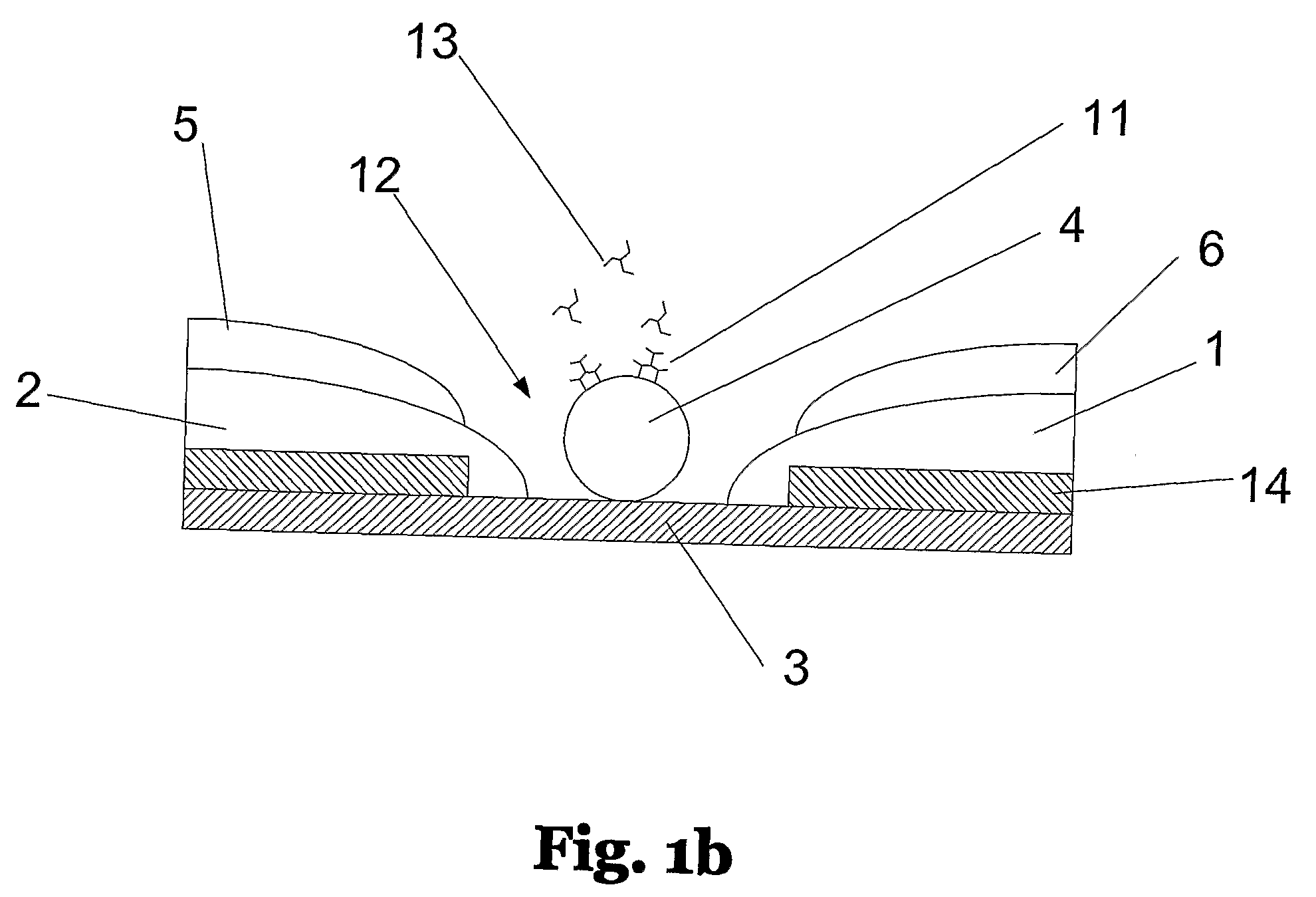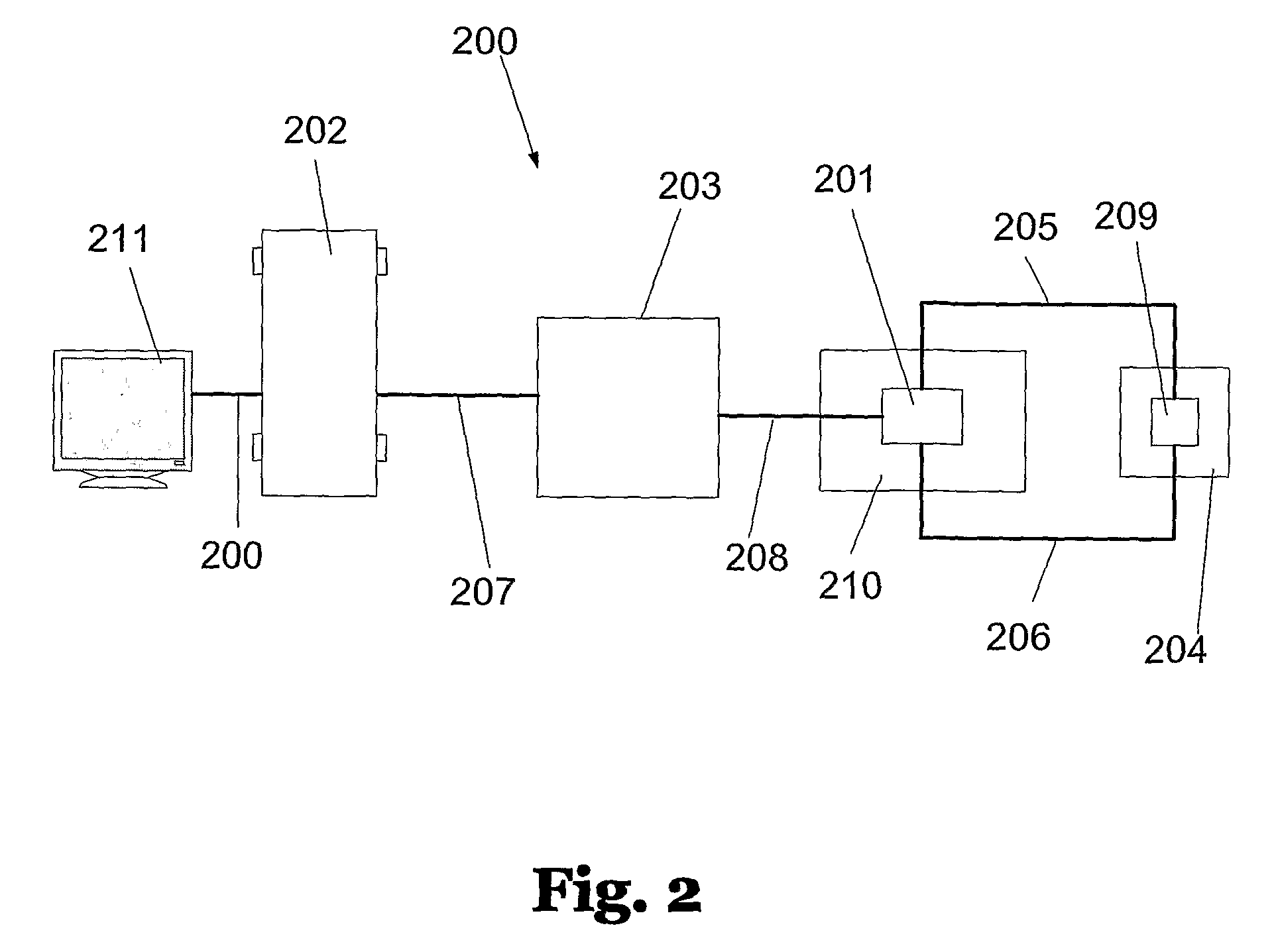Sensor for Detection of Single Molecules
a single-molecule, sensor technology, applied in the direction of diaphragms, cells, immobilised enzymes, etc., can solve the problems of not being able to adapt the set, not being able to solve the problem of adapting the set, and requiring additional manufacturing complexity, so as to increase the sensitivity of the biosensor and reduce the distortion of the measurement
- Summary
- Abstract
- Description
- Claims
- Application Information
AI Technical Summary
Benefits of technology
Problems solved by technology
Method used
Image
Examples
example 1
Fabrication and Size Separation of Citrate Stabilized Gold Nanoparticles
[0139]Gold nanoparticles were fabricated by tannic acid assisted citrate reduction of tetrachloroaurat (AuCl4−). The size of the obtained gold nanoparticles depends on the amount of tannic acid added, more tannic acid giving smaller sized particles. AuNPs were prepared in different batches with a mean size of 14 nm and 5 nm respectively, according to the following protocol:
[0140]All glassware used was extensively washed with Helmanex™ and extensively rinsed with water (MilliQ ultra-pure distilled water>18.2 μl, MilliPore System). In order to make 100 ml of raw AuNP solution, two stock solutions were prepared: I, 80 ml water was mixed with 1 ml aqueous AuCl4− (1% in water, SigmaAldrich) and II, 16 ml water was mixed with 4 ml tri-sodium citrate (1% in water, SigmaAldrich) and either 0.025 ml or 2.50 ml tannic acid (1% in water, SigmaAldrich) for large and small particles respectively. For the smaller particles, a...
example 2
Avidin Functionalisation of Gold Nanoparticles
[0153]Avidin is a glycoprotein found in raw egg white. It combines stoichiometrically with biotin. The great affinity of Avidin for biotin, makes the system as a versatile platform for binding any biotinylated proteins such as antibodies or Fab-fragments for use for example in immunoassays, receptor and histochemical studies.
[0154]Large gold AuNPs (14 nm) prepared according to the procedure in Example 1 above were surface modified with Avidin by crude adsorption, according to a modified method as follows, which yields AuNPs completely covered with a monolayer of Avidin: Avidin (1 mg / ml in Tris, Sigma-Aldrich) and subsequently CaCl2 (50 mM in water) was added to gold nanoparticles in an Eppendorf tube, rendering a final concentration of 0.05 mg / ml and 5 mM respectively. The CaCl2 was added in order to prevent the Avidin coated particles from sticking to each other. In order to get rid of excess Avidin, the coated particles were centrifuge...
example 3
Cystine Coating of Gold Nanoparticles
[0169]Equal volumes of citrate stabilised AuNP (5 nm) solution prepared according to the procedure described above and saturated cystine solution were mixed and incubated in room temperature over night. The solvability of cystine in water is very low, i.e. only 53 mg / ml or 221 μM, why a saturated cystine solution was prepared for the functionalisation. As a reference, AuNP solution was also mixed with water and treated in the same way as the functionalised AuNPs. In order to remove excess cystine and citrate from the solution and enhance the particle concentration after functionalisation, the AuNP solution was loaded into centrifugation tubes (Ultra Clear™ Tubes, 14×95 mm, Beckman) and centrifuged at 225 000 g at 4° C. for 75 minutes. After centrifugation, the pellet was diluted to desired concentration with water. This method yields solutions that are stable, however sensitive. The solution with functionalised AuNPs could be centrifuged and the ...
PUM
| Property | Measurement | Unit |
|---|---|---|
| Time | aaaaa | aaaaa |
| Distance | aaaaa | aaaaa |
| Nanoscale particle size | aaaaa | aaaaa |
Abstract
Description
Claims
Application Information
 Login to View More
Login to View More - R&D
- Intellectual Property
- Life Sciences
- Materials
- Tech Scout
- Unparalleled Data Quality
- Higher Quality Content
- 60% Fewer Hallucinations
Browse by: Latest US Patents, China's latest patents, Technical Efficacy Thesaurus, Application Domain, Technology Topic, Popular Technical Reports.
© 2025 PatSnap. All rights reserved.Legal|Privacy policy|Modern Slavery Act Transparency Statement|Sitemap|About US| Contact US: help@patsnap.com



